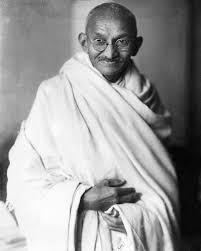Summary and Main Points - Indigo Class 12 English Flamingo
Key Points of the Story
- Gandhi meets Rajkumar Shukla at Indian National Congress convention.
- Shukla invites Gandhi to Champaran to address sharecropper issues.
- Gandhi faces resistance from British officials in Champaran.
- Gandhi stands up for peasants, leading to civil disobedience.
- Gandhi negotiates with landlords for sharecropper rights.
- Gandhi initiates social reforms and education in Champaran villages.
Detailed Summary
In 1942, during a visit to Gandhi's ashram in Sevagram, Gandhi shared the story of his involvement in the Champaran movement of 1917, which marked a significant turning point in his fight against British rule. It all began when a persistent peasant named Rajkumar Shukla convinced Gandhi to visit Champaran, a district in Bihar, where the local peasants were oppressed by British landlords.
The Champaran peasants were sharecroppers, forced to grow indigo on a portion of their land and surrender the entire crop as rent. When synthetic indigo was developed in Germany, the landlords demanded compensation to release the peasants from this arrangement. Many illiterate peasants, unaware of this new development, signed agreements but later wanted their money back.
Gandhi visited Champaran to investigate the situation, despite resistance from British officials who tried to intimidate him. He gathered extensive evidence of the injustices faced by the sharecroppers and received strong support from local peasants and lawyers. When the British authorities attempted to evict him, Gandhi chose to stay and face trial, drawing massive support from the local populace.
 Gandhi’s non-violent protest and civil disobedience led to the appointment of an official commission to investigate the issue, which included Gandhi as the representative of the peasants. The commission's findings compelled the landlords to refund part of the money to the peasants, marking a significant victory. This episode demonstrated the power of non-violent resistance and boosted the confidence of the Indian people.
Gandhi’s non-violent protest and civil disobedience led to the appointment of an official commission to investigate the issue, which included Gandhi as the representative of the peasants. The commission's findings compelled the landlords to refund part of the money to the peasants, marking a significant victory. This episode demonstrated the power of non-violent resistance and boosted the confidence of the Indian people.
During his stay in Champaran, Gandhi also addressed the social and cultural issues of the villages. He established schools, improved sanitation, and provided medical aid, embodying his holistic approach to social reform.
The Champaran episode underscored Gandhi’s philosophy of intertwining political action with social service, emphasizing self-reliance and the need for Indians to stand up for their rights. It also highlighted the importance of not depending on foreign assistance, as exemplified by Gandhi’s rejection of help from the English pacifist, Charles Freer Andrews.
This movement not only alleviated the immediate suffering of the Champaran peasants but also set a precedent for future civil rights movements in India, showcasing Gandhi's method of non-violent resistance and his commitment to justice and human dignity.
Theme/Message
Theme: The theme of the story revolves around standing up against injustice, empowering the oppressed, and promoting self-reliance.
Message: The message conveyed is that even ordinary actions can lead to significant changes, emphasizing the importance of fighting for justice, self-sufficiency, and the welfare of the marginalized.
Difficult Words
- Tenacity - Persistence or determination
- Sharecropper - Farme
- Indigo - A plant used for dye
- Commissioner - Official in charge of a specific area
- Desertion - Abandonment of duty or responsibility
- Civil disobedience - Nonviolent resistance against unjust laws
- Conscience - Inner sense of what is right or wrong
- Coerced - Forced or compelled
- Prestige - Status or reputation
- Liberation - Freedom from oppression
|
21 videos|319 docs|95 tests
|
FAQs on Summary and Main Points - Indigo Class 12 English Flamingo
| 1. What is the main theme of the story "Indigo"? |  |
| 2. Who is the protagonist in the story "Indigo"? |  |
| 3. What historical context does "Indigo" reflect? |  |
| 4. What role does Mahatma Gandhi play in the story "Indigo"? |  |
| 5. How does "Indigo" convey the message of resistance? |  |

|
Explore Courses for Class 12 exam
|

|


















